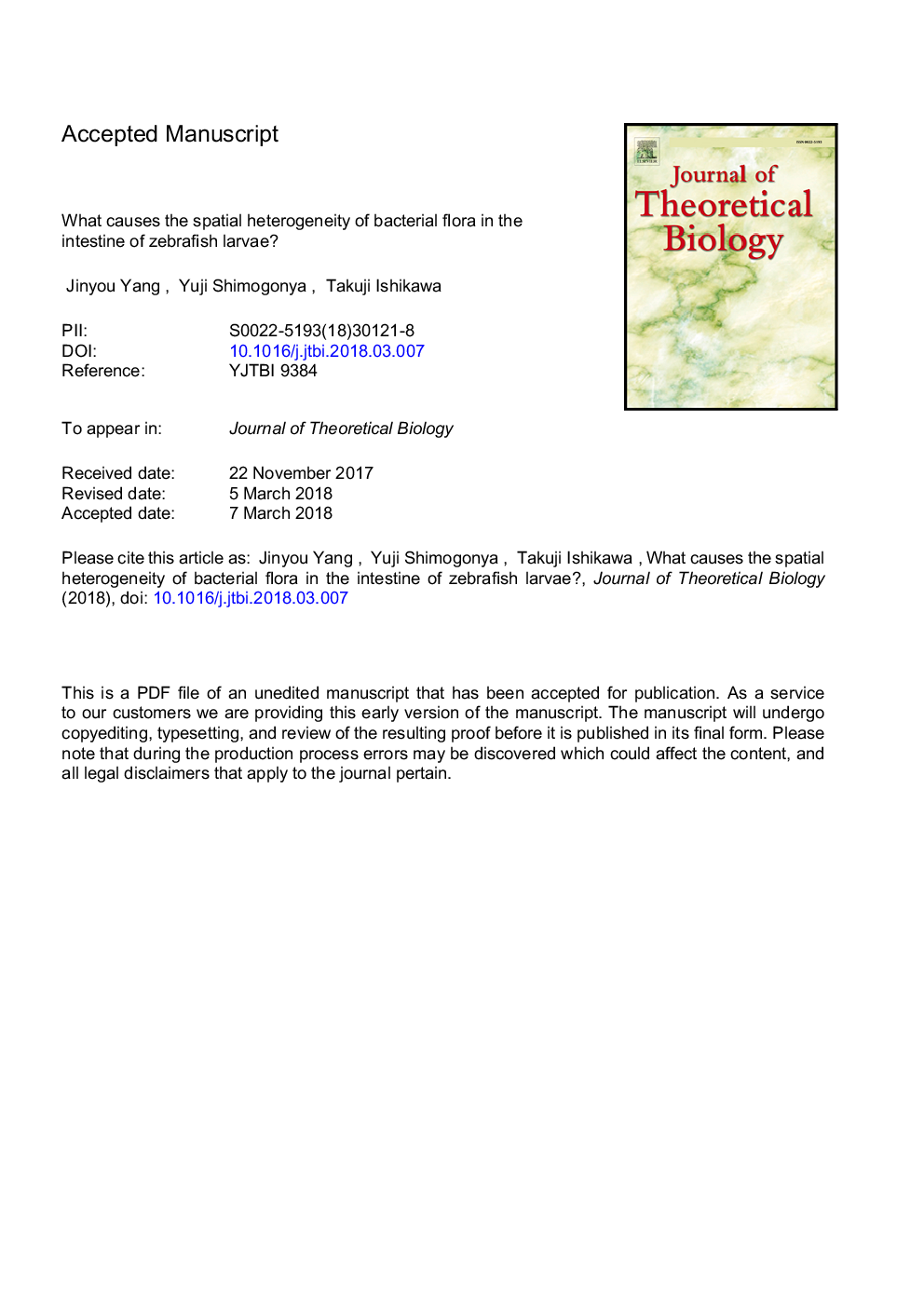| Article ID | Journal | Published Year | Pages | File Type |
|---|---|---|---|---|
| 8876731 | Journal of Theoretical Biology | 2018 | 25 Pages |
Abstract
Microbial flora in the intestine has been thoroughly investigated, as it plays an important role in the health of the host. Jemielita et al. (2014) showed experimentally that Aeromonas bacteria in the intestine of zebrafish larvae have a heterogeneous spatial distribution. Although bacterial aggregation is important biologically and clinically, there is no mathematical model describing the phenomenon and its mechanism remains largely unknown. In this study, we developed a computational model to describe the heterogeneous distribution of bacteria in the intestine of zebrafish larvae. The results showed that biological taxis could cause the bacterial aggregation. Intestinal peristalsis had the effect of reducing bacterial aggregation through mixing function. Using a scaling argument, we showed that the taxis velocity of bacteria must be larger than the sum of the diffusive velocity and background bulk flow velocity to induce bacterial aggregation. Our model and findings will be useful to further the scientific understanding of intestinal microbial flora.
Related Topics
Life Sciences
Agricultural and Biological Sciences
Agricultural and Biological Sciences (General)
Authors
Jinyou Yang, Yuji Shimogonya, Takuji Ishikawa,
